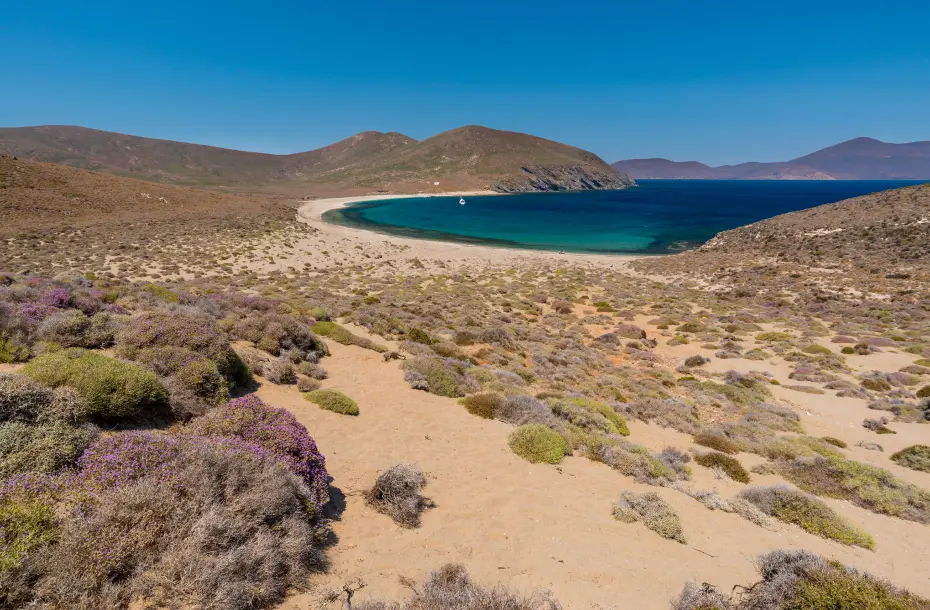An easy guide for how to get to Psara by Ferry, schedules and prices for the Ferry to/from Psara and recommendations for public transportation services. Explore the website and find all necessary details for the Ferry to Psara; Port description, destinations and Routes with schedules and prices, accommodation options with real time availability and helpful tips for transfer opportunities in Psara!
Psara by ferry
In the following lines, we have prepared a small user guide that will help passengers to travel to Psara as easily and pleasantly as possible.
Find useful information on how to get to Psara by ferry, local public transportation options to reach your overnight hotel, port addresses and embarkation offices, ferry schedules and prices, and real-time departures and arrivals.
Psara by ferry is the best option you have and it can be a very nice and exciting experience and especially if you are doing some island-hopping too. Greek islanders are seasoned ferry experts and they prefer to travel by ferry because of the convenience and flexibility it affords!
There is a choice of Regular Ferries that are running frequently with stops along the way. Cars are allowed on most ferries, for an additional fee and children usually travel for half price!
Give a date and click on "search" to view the ferry timetables!
Notice: Each year and depending on the period, there may be more or fewer connections to Psara. The biggest shipping companies (ferry operators) announce the new ferry schedules by the end of March and the rest of them by April-June each year!
Schedules & prices for Psara
With the developed "Easy-Way" system of go-ferry.com, you can make the most reliable and flexible online booking of your ferry ticket!
We will connect you to the booking systems of most ferry operators and will show you:
- Direct itineraries with schedules to Psara
- Alternative routes to Psara
- Ferry prices
- Prices for Adults, children, and babies
- Prices for all vehicle sizes
- Trailer prices
- Ticket offers*
- Early booking discount*
With all these options we offer, you can be sure that you will find the best deal for the ferry ticket to Psara at a price that will suit your budget.
*if any
Psara ferry tickets
Arrange your ferry ticket in advance.
If your final destination is Psara do not neglect to book your ferry tickets early enough to avoid last-minute surprises! We are sure that you do not want to ruin your vacation or change your destination because you will not find an itinerary available. How could you feel to be at the departure port and not be able to board the ferry to Psara because it is fully booked?
On this page page, we will mention some reasons that make it necessary to book your ferry tickets to your destination in advance!
Accommodation on the ferry to Psara
Book your ideal accommodation on the ferry to Psara and arrive fresh and rested to your destination! Comfortable armchairs, business class comfort seats, outside and inside cabins or economy deck chairs. There is a range of accommodation options to choose for a day or night ride to or from Psara port.
About Psara
Although small in extent (42 km) Psara is birthplace of many sailors with significant national role during the 1821 Revolution (famed brulotiers (fire shipmen) were Kanaris, Vourekas, Vratsanoi and others). This island was the third in power maritime force in Greece after Hydra and Spetses. In 1824 the Turks conquered the island slaughtering its inhabitants and looting houses and churches. The tragedy of Psara was rhapsodized by Greek national poet Dionyssios Solomos and became a painting by famous French painter Eugene Delacroix. The deserted island was liberated by Greek navy in 1912. It is 44 n.m. NW to Chios with which it is connected by ferry (from the city and from Volissos). Also, there is a ferry connection from Piraeus and Rafina ports (Attica).
Psara is the sole settlement of the island with approximately 400 inhabitants. It has low houses with a mixed architectural style and develops around the port.
Sightseeing
Koimisis tis Theotokou monastery, which is located on the northern part of the island, on Profitis Ilias peak and has a remarkable library.
Palaiokastro, which was built by settlers (Thessalians, Evians and Chians) in the 15th century out of fear of the pirates. Here a lighthouse shines on the busy passage between Chios and Psara.
Useful Information
Municipality: 22740-61.266
Local Medical Center: 22740-61.277
Police: 22740-61.222
Local Port Authority: 22740-61.336
